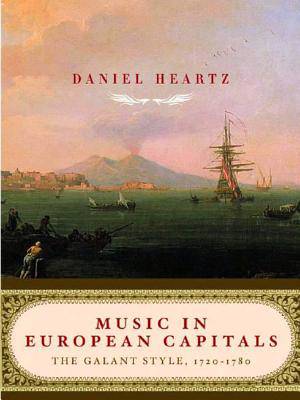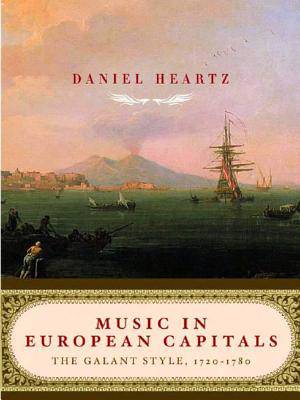
- Afhalen na 1 uur in een winkel met voorraad
- Gratis thuislevering in België vanaf € 30
- Ruim aanbod met 7 miljoen producten
- Afhalen na 1 uur in een winkel met voorraad
- Gratis thuislevering in België vanaf € 30
- Ruim aanbod met 7 miljoen producten
Zoeken
€ 138,95
+ 277 punten
Omschrijving
This volume continues the study of the eighteenth century begun in Haydn, Mozart, and the Viennese School 1740-1780 (1995) by focusing on the capital cities other than Vienna that were most important in the creation and diffusion of new music. It tells of events in Naples, where Vinci and Pergolesi went beyond their pre-1720 models to cultivate opera in a simpler, more direct manner, soon after christened the galant style. No less central was Venice, where Vivaldi perfected the concerto, on which were patterned the early symphonies and the newer kind of sonata. Dresden profited first from all these achievements and became, under Hasse's direction, the foremost center of Italian opera in Germany. Mannheim with its great orchestra did much to shape the modern symphony. A few years later, Paris became paramount, especially for its Opéra-Comique; during the 1770s the Opéra provided Gluck with a stage on which to cap his long international career. The book concludes with a description of Christian Bach in London, Paisiello in Saint Petersburg, and Boccherini in Madrid.
This long-awaited book offers a view of eighteenth-century music that is broad and innovative while remaining sensitive to the values of those times and places. One comes away from it with an understanding of the European context behind the triumphs of Haydn and Mozart.
Lavishly illustrated with music examples and reproductions, both in black-and-white and color, this master study will be of inestimable importance to scholars, cultural historians, performers, and all music lovers.
This long-awaited book offers a view of eighteenth-century music that is broad and innovative while remaining sensitive to the values of those times and places. One comes away from it with an understanding of the European context behind the triumphs of Haydn and Mozart.
Lavishly illustrated with music examples and reproductions, both in black-and-white and color, this master study will be of inestimable importance to scholars, cultural historians, performers, and all music lovers.
Specificaties
Betrokkenen
- Auteur(s):
- Uitgeverij:
Inhoud
- Aantal bladzijden:
- 1104
- Taal:
- Engels
Eigenschappen
- Productcode (EAN):
- 9780393050806
- Verschijningsdatum:
- 17/06/2003
- Uitvoering:
- Hardcover
- Formaat:
- Genaaid
- Afmetingen:
- 193 mm x 239 mm
- Gewicht:
- 1719 g

Alleen bij Standaard Boekhandel
+ 277 punten op je klantenkaart van Standaard Boekhandel
Beoordelingen
We publiceren alleen reviews die voldoen aan de voorwaarden voor reviews. Bekijk onze voorwaarden voor reviews.








